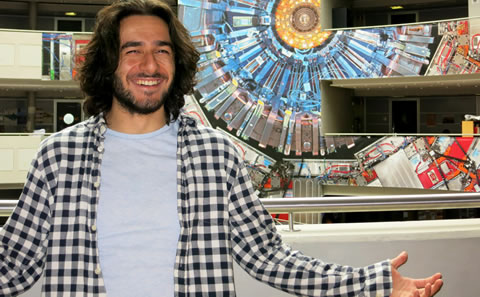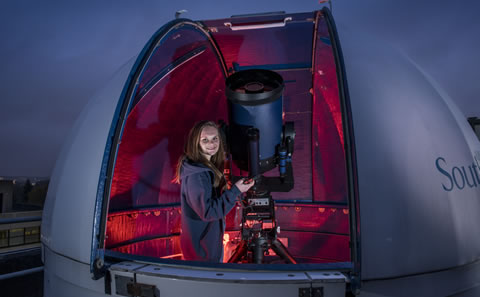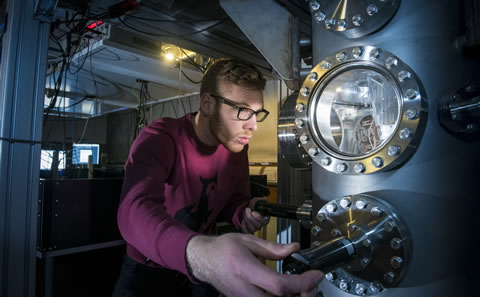
Flagship programmes
Our unique flagship degrees enable our top students to focus on a cutting-edge research project in their fourth year, either locally or abroad.
We’re first in the Russell Group for student satisfaction – for the third year running (National Student Survey, 2017)

Our unique flagship degrees enable our top students to focus on a cutting-edge research project in their fourth year, either locally or abroad.

Read our student stories to find out what they love about studying Physics and Astronomy at Southampton.

Missed our Open Days this year? Take a virtual tour and get a feel for life at Southampton.

If you apply to study at Southampton, we’ll invite you to one of our Visit Days, which run from November to March.

Download a physics and astronomy brochure or order one to be sent through the post.

Our flexible degrees enable you to tailor your course to your interests and enhance your employability.

Our flexible degrees enable you to tailor your course to your interests and enhance your employability.

Download a physics and astronomy brochure or order one to be sent through the post.

If you apply to study at Southampton, we’ll invite you to one of our Visit Days, which run from November to March.

Missed our Open Days this year? Take a virtual tour and get a feel for life at Southampton.

Read our student stories to find out what they love about studying Physics and Astronomy at Southampton.

Our unique flagship degrees enable our top students to focus on a cutting-edge research project in their fourth year, either locally or abroad.
We’re first in the Russell Group for student satisfaction – for the third year running (National Student Survey, 2017)
We’re first in the Russell Group for student satisfaction – for the third year running (National Student Survey, 2017)